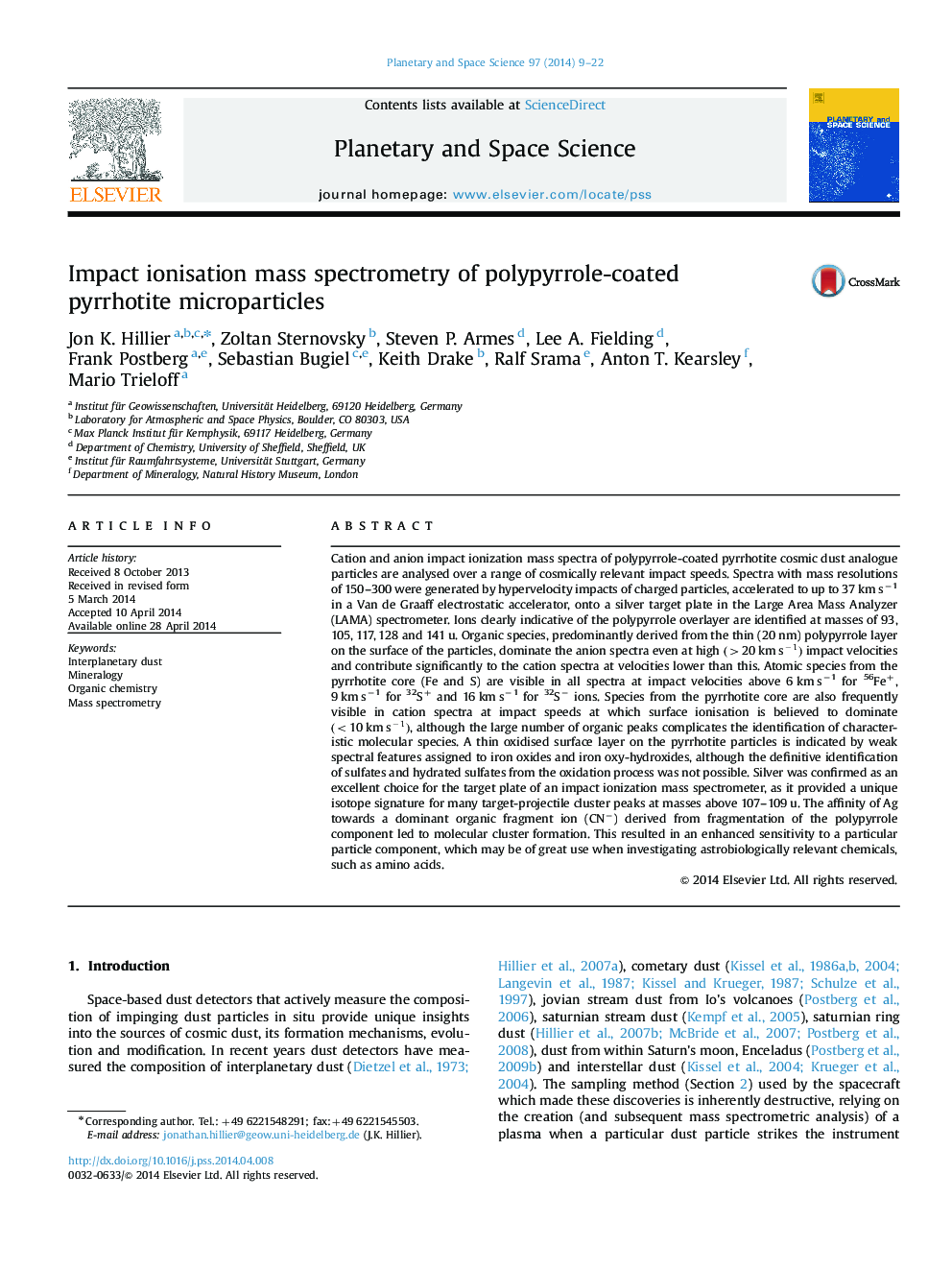| Article ID | Journal | Published Year | Pages | File Type |
|---|---|---|---|---|
| 1781119 | Planetary and Space Science | 2014 | 14 Pages |
•Impact ionisation mass spectra of polypyrrole-coated pyrrhotite particles are shown•Projectiles mimic core–shell cosmic dust particles•Fe and S cations appear in positive spectra, S anions appear in negative spectra•Spectra are dominated by organic peaks from the polypyrrole overlayer•CN- and Ag target atoms cluster, increasing the apparent instrument sensitivity
Cation and anion impact ionization mass spectra of polypyrrole-coated pyrrhotite cosmic dust analogue particles are analysed over a range of cosmically relevant impact speeds. Spectra with mass resolutions of 150–300 were generated by hypervelocity impacts of charged particles, accelerated to up to 37 km s−1 in a Van de Graaff electrostatic accelerator, onto a silver target plate in the Large Area Mass Analyzer (LAMA) spectrometer. Ions clearly indicative of the polypyrrole overlayer are identified at masses of 93, 105, 117, 128 and 141 u. Organic species, predominantly derived from the thin (20 nm) polypyrrole layer on the surface of the particles, dominate the anion spectra even at high (>20kms−1) impact velocities and contribute significantly to the cation spectra at velocities lower than this. Atomic species from the pyrrhotite core (Fe and S) are visible in all spectra at impact velocities above 6 km s−1 for 56Fe+, 9 km s−1 for 32S+ and 16 km s−1 for 32S− ions. Species from the pyrrhotite core are also frequently visible in cation spectra at impact speeds at which surface ionisation is believed to dominate (<10kms−1), although the large number of organic peaks complicates the identification of characteristic molecular species. A thin oxidised surface layer on the pyrrhotite particles is indicated by weak spectral features assigned to iron oxides and iron oxy-hydroxides, although the definitive identification of sulfates and hydrated sulfates from the oxidation process was not possible. Silver was confirmed as an excellent choice for the target plate of an impact ionization mass spectrometer, as it provided a unique isotope signature for many target-projectile cluster peaks at masses above 107–109 u. The affinity of Ag towards a dominant organic fragment ion (CN−) derived from fragmentation of the polypyrrole component led to molecular cluster formation. This resulted in an enhanced sensitivity to a particular particle component, which may be of great use when investigating astrobiologically relevant chemicals, such as amino acids.
